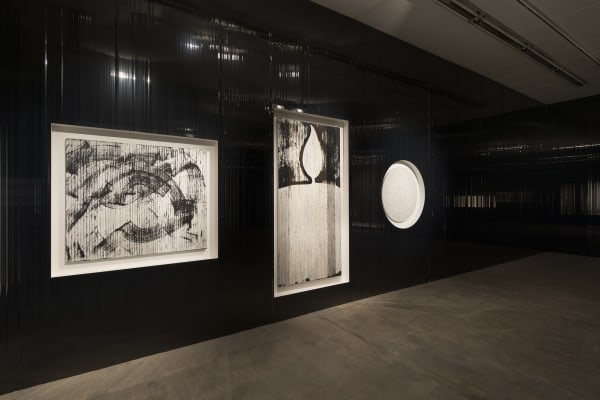Gregor Hildebrandt – Auf Wasser schlafend rauscht das Meer
Past exhibition
Overview
A full-length dressing room mirror as a portal to Hades. Orpheus touches the mirror’s surface. Concentric circles ripple out from his finger, the glass liquefies, and he slips through a quicksilver sea to the other side. Jean Cocteau adapted the tale of Orpheus, the tragic bard from Greek mythology who unsuccessfully sought to rescue his wife Eurydice from the underworld, for his film Orphée (1940). Hundreds of ribbons of videotape of an endless loop of Cocteau’s film form the black rustling and mirroring walls in Gregor Hildebrandt’s May 2015 exhibition Auf Wasser schlafend rauscht das Meer [slumbering on water, the sea murmurs] at WENTRUP. Hildebrandt’s extraordinary talent for transforming materials, which he has continually developed and refined in installations over the years, is consummately manifest here. Hildebrandt assigns a new function to the audio- and videotape, a material in now dwindling use for recording and preserving sound and moving images, by employing it as an artistic medium. Liberated by Hildebrandt from its canister, this vehicle for now-invisible images and silent sound acquires a broader, very different function. The streamers of tape comprising the walls of the exhibition become dark, permeable curtains behind which a parallel world awaits – a creation equivalent to Cocteau’s mirrored portal, which itself is imperceptibly depicted in the ribbons of recorded film.
Installation Views
Subscribe to our newsletter
* denotes required fields
We will process the personal data you have supplied in accordance with our privacy policy (available on request). You can unsubscribe or change your preferences at any time by clicking the link in our emails.











